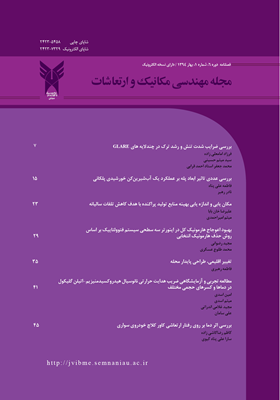تغییر اقلیمی، طراحی پایدار محله
محورهای موضوعی : انتقال ارتعاشات
1 - استادیار، مرکز تحقیقات انرژی و توسعه پایدار، واحد سمنان، دانشگاه آزاد اسلامی، سمنان، ایران
کلید واژه: محله, انرژی, تغییرات اقلیمی, طراحی پایدار,
چکیده مقاله :
پدیده ی تغییر اقلیم به دلایل گوناگونی چون نوسانات درون اقلیم زمین، فرآیندهای طبیعی و فعالیت های بشر رخ داده است؛ در پی آن با انتشار بیش از حد گازهای گلخانه ای در اثر مصرف سوخت های فسیلی، نسبت جذب به بازتاب اشعه ی خورشید افزایش یافته، کره ی زمین گرم تر شده و این تغییر، زندگی نسل کنونی و آینده را با خطر جدی مواجه ساخته است. از آنجا که شاید مهمترین دستاورد بشر، تمدن و شهرنشینی است و محله رکن اصلی کالبد شهری است؛ در پیوند عوامل فوق در این مقاله، ابتدا تغییر اقلیم و عوامل آن شرح داده می شود و سپس با مشخص نمودن مفاهیم پایداری و محله، ساختار یک محله پایدار در جهت جلوگیری از ادامه ی روند تغییر اقلیم بررسی می شود. تحقق اصول و معیارهای طراحی محله، نیازمند مشارکت همهی متخصصان امر به ویژه معماران، شهرسازان و مردم است تا نسل آینده نیز بتواند نیازهای خود را برآورده سازد و این یعنی طراحی پایدار: آینده گرایی، محیط گرایی و مشارکت گرایی.
The phenomenon of climate change is caused by various factors such as swings at the Earth’s climate, natural processes, and human activities. Following that, the solar absorption has been increasing as compared with the radiation of the Sun’s ray, the Earth is getting warmer, and this change is threatening the lives of the present and also the future generation; all these are caused by the excessive emission of greenhouse gases (GHG) due to the fossil fuel consumption. Since the most important achievements of mankind may be civilization and urbanization and the neighborhood is considered as linchpin of the city frame, firstly, climate change and its factors are described in this paper to relate the aforementioned factors and then the structure of a sustainable neighborhood is examined by defining the concepts of neighborhood and sustainability in order to prevent the continuation of climate change. Achieving the principles and criteria of the neighborhood design requires collaboration of all related specialists, especially architects, urban planners, and the people; then the future generation will be able to meet their own needs and this means sustainable design: future-oriented, environment-oriented, and partnership-oriented.


